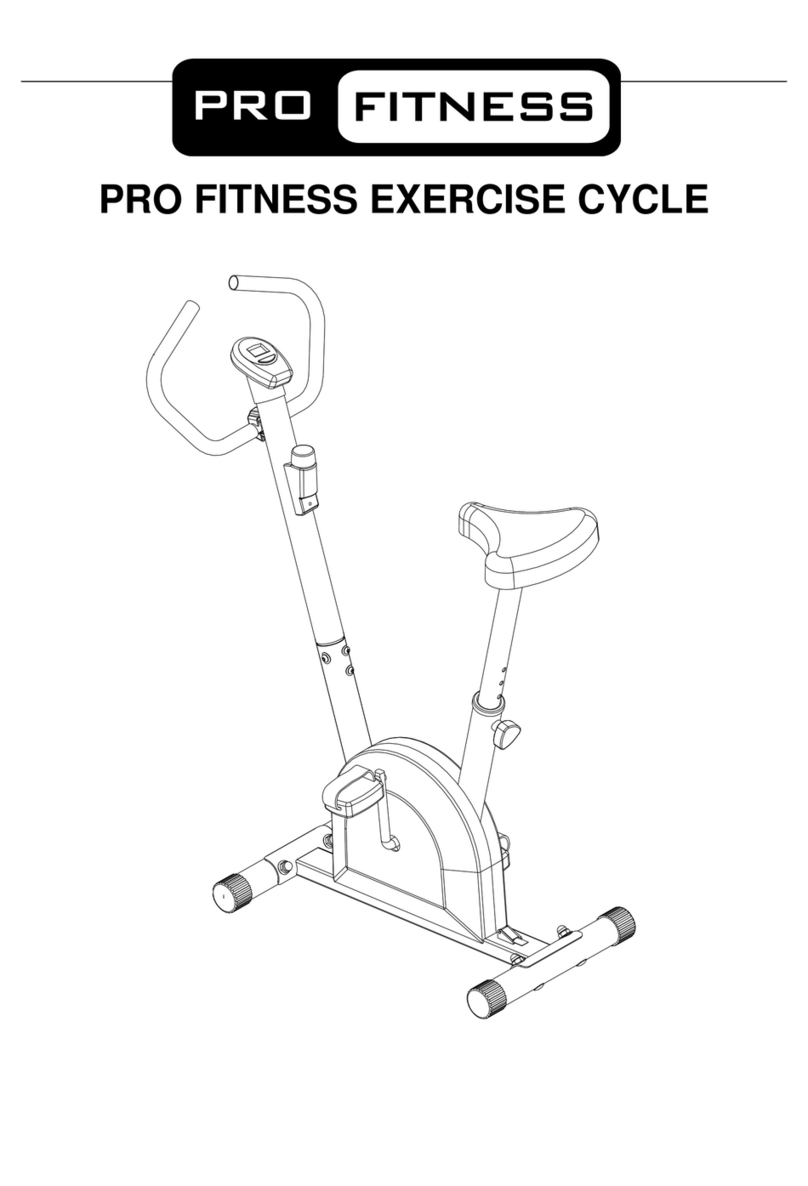
This exercise equipment is built for optimum safety. However, certain precautions apply whenever you
operate a piece of exercise equipment. Be sure to read the entire manual before you assemble, operate or
use this equipment.
Assembly
• The product must be installed on a stable and
level surface. To protect the floor or carpet from
damage, place a mat under the exercise bike.
• Assemble the item as close to its final position
(in the same room) as possible.
• Make sure you have enough space to layout the
parts before starting.
• Keep children and animals away from the work
area, small parts could pose a choking hazard if
swallowed.
• Dispose of all packaging carefully and responsibly.
• Check you have all the components and tools
listed in the parts list, bearing in mind that, for ease
of assembly, some components are pre-assembled.
• The assembly of this equipment is best carried out
by 2 people.
Use
• It is the responsibility of the owner to ensure that
all users of this product are properly informed as to
how to use this product safely.
• This product is intended for domestic use only.
Do not use in any commercial, rental, or institutional
setting.
• Use the equipment only for intended use, as
described in this manual. Do not use attachments
not recommended by the manufacturer.
• Keep this equipment indoors, away from moisture
and dust. Do not put the equipment in a garage,
outbuilding, covered patio, or near water.
• Your product is intended for use in clean dry
conditions. You should avoid storage in excessively
cold or damp places as this may lead to corrosion
and other related problems that are outside our
control.
• Keep unsupervised children away from the
equipment.
• Disabled persons should not use the equipment
without a qualified person or doctor in attendance.
• Always wear appropriate workout clothing when
exercising. Do not wear loose or baggy clothing, as
it may get caught in the equipment. Wear trainers to
protect your feet while exercising.
• Do not place any sharp objects around the
equipment.
• Keep hands away from all moving parts.
• If any of the adjustment devices are left projecting,
they could interfere with the user’s movement.
• Before using the equipment to exercise, always
perform stretching exercises to properly warm up.
• Only one person at a time should use the
equipment.
• If the user experiences dizziness, nausea, chest
pain, or other abnormal symptoms stop the workout
and seek immediate medical attention.
• Injuries to health may result from incorrect or
excessive training.
• This product is suitable for a maximum user
weight of: 120kg.
• This product conforms to: BS EN ISO 20957-1
and -5 Class (H) - Home Use - Class (C).
• This stationary training equipment is not suitable
for high accuracy purposes.
• The braking system is adjustable.
• Always examine your exercise bike before use to
ensure all parts are in working order.
• Never insert any object or body parts into any
opening.
•Warning: Batteries are to be inserted with the
correct polarity. Incorrect installation of batteries may
cause battery leakage and corrosion, resulting in
damage to the computer.
• Do not mix old and new batteries, or
batteries of different types.
Important – Please read fully before assembly or use


























